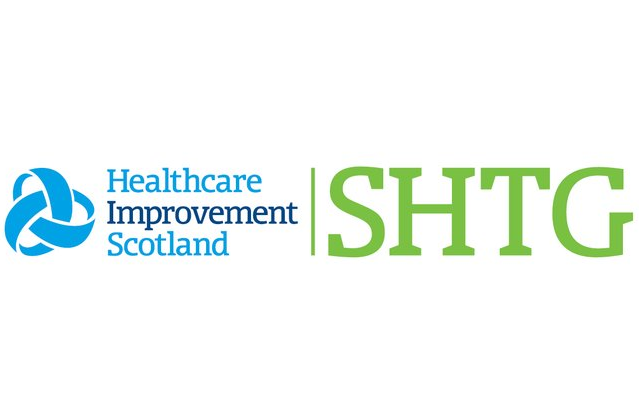Tumour profiling tests to guide adjuvant chemotherapy decisions for patients with early breast cancer

SHTG Recommendations for NHSScotland
In patients* with oestrogen receptor positive (ER+), human epidermal growth factor receptor 2 negative (HER2-), early-stage breast cancer with 0-3 positive lymph nodes, the use of tumour profiling tests:
- is unlikely to provide additional benefit for decision making about adjuvant chemotherapy for patients who have a low or high clinical risk of distant recurrence, as defined using a validated tool such as PREDICT or the Nottingham Prognostic Index (NPI)
- is recommended as set out in the decision tree on page 2 for patients who have an intermediate risk of distant recurrence, as defined using a validated tool such as PREDICT or the NPI
When tumour profiling tests are indicated, their use should be limited to patients in whom there is uncertainty from both the patient and the clinician as to the benefit of chemotherapy. The tests are intended to be used in addition to existing tools to increase clarity around adjuvant chemotherapy decision making. A shared decision-making discussion should take into account clinical and pathological risk factors alongside patient characteristics and preferences.
There should be ongoing data collection on the impact of using tumour profiling tests on patient outcomes and return on investment in NHSScotland.
NHSScotland is required to consider the Scottish Health Technologies Group (SHTG) advice.
How the Council reached the recommendation
The recommendations in the NICE guidance were not split by menopausal status. The SHTG Recommendations have considered pre- and postmenopausal patients separately because several studies, including the three main RCTs, noted a greater treatment effect from adjuvant chemotherapy in younger (premenopausal) women, even with low-risk scores from tumour profiling tests. This benefit may be partly explained by an antioestrogenic effect associated with premature menopause induced by chemotherapy. Until this question has been answered by the evidence, SHTG considered that greater caution around the use of tumour profiling tests is needed in premenopausal patients. The Council asked a clinical expert about the applicability of the evidence to men with breast cancer. The expert advised that the recommendations could apply to men and application of the decision tree with male patients should be based on clinical expertise.
The SHTG Council considered the decision tree, and noted the justifications given by the SHTG research team for the recommendation in each of the four main patient groups:
Premenopausal patients with LN- disease
There is insufficient evidence to support the use of EndoPredict® and MammaPrint® in this patient group, and Prosigna® is only indicated for use in postmenopausal patients.
The TAILORx trial suggested that patients aged 50 years and younger who are LN-, with an Oncotype DX® Recurrence Score (RS) of 15 or lower, may be spared chemotherapy. SHTG Council noted concerns about:
-
- the generalisability of the participants in the TAILORx study
- a general trend in the literature that suggests premenopausal women benefit more from chemotherapy, even when genomic risk scores are low
- As a result of these concerns, the recommendation for use in this subset of patients was restricted.
Premenopausal patients with LN+ disease
There is insufficient evidence to support the use of EndoPredict®, Oncotype DX® and MammaPrint® in this patient group, and Prosigna® is only indicated for use in postmenopausal patients.
The RxPONDER trial, not included in the NICE guidance, evaluated the use of Oncotype DX® in predicting the benefit of adjuvant chemotherapy in women with LN+ disease, and in premenopausal women a chemotherapy benefit was seen across subgroups.
This suggests that premenopausal patients may still benefit from chemotherapy, even with a lower Oncotype DX® RS.
Postmenopausal patients with LN- disease
In this patient group the recommendations from the NICE (2018) guidance for EndoPredict®, Oncotype DX® and Prosigna® still apply to postmenopausal patients. SHTG identified new clinical- and cost-effectiveness evidence that strengthens NICE’s recommendation.
NICE did not recommend the use of MammaPrint® because it was not found to be cost effective. An updated cost-effectiveness model submitted to SHTG by Agendia demonstrated that the MammaPrint® test may be cost effective in LN- patients with intermediate clinical risk. SHTG concluded that MammaPrint® could be recommended in this patient group because of changes in the availability of the evidence to inform the parameters of the economic model.
Postmenopausal patients with LN+ disease
SHTG Council concluded that there was insufficient evidence to support the use of tumour profiling tests in postmenopausal patients with LN+ disease. Until more research is available, routine use of tumour profiling tests cannot be recommended in this patient group.
SHTG Council considered the RxPONDER trial and acknowledged the finding that there was no chemotherapy benefit in patients with LN+ disease who had an Oncotype DX® RS of 0-25. SHTG Council expressed the following concerns.
-
- The majority of participants had cancer that had spread to one lymph node only (65.3%). Only 9% of participants had cancer that had spread to three lymph nodes, meaning the trial mainly reflected the ‘lower risk’ LN+ patients.
- NICE in 2018 raised concerns that, based on the OPTIMA Prelim study, there was a lack of agreement between the tests in risk categorising the groups with LN+ disease and limited their recommendations to LN- populations. No evidence was identified to alleviate this concern.
SHTG Council acknowledged that the evidence base in this area is rapidly evolving and this SHTG Recommendation may change as more evidence and health technology assessments (HTAs) become available. The OPTIMA trial was highlighted as having the potential to address gaps in the evidence.
SHTG Council noted that the genes that are mapped by the four tests varied considerably, suggesting that the different tests capture different aspects of prognostic drivers. This would suggest that future improvements and refinements in the tests remain possible.
The Council heard from a clinical expert who talked about the use of these tests in NHSScotland, noting current variation in practice. The clinical expert reiterated that tumour profiling tests should not replace existing prognostic tools, but be used alongside them. The
Council noted that every patient has different experiences and preferences, which will influence the value of tumour profiling tests to them.
The Council heard from Breast Cancer Now about the devastating impact a breast cancer diagnosis can have on a person and the people close to them. When discussing the impact of tumour profiling tests on patients, the Council agreed that timeliness is important. Waiting for test results not only prolongs anxiety for patients, but may also delay chemotherapy. This is a factor that should be considered when deciding which test should be used in NHSScotland.
Date of publication: 6 October 2023

